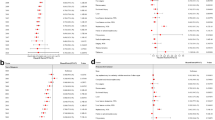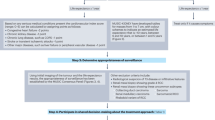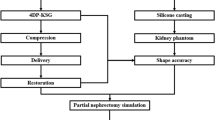Abstract
For lesions smaller than 4 cm, nephron-sparing surgery has been shown to be oncologically equivalent to radical nephrectomy, albeit with the advantage of preservation of overall renal function. As such, partial nephrectomy became the first-line treatment option for localized, small renal masses. Minimally invasive options associated with limited morbidity—such as probe-ablative procedures—are, however, being investigated in selected patients for whom invasive, nephron-sparing surgery (whether laparoscopic or open) is undesirable. The main probe-ablative techniques being investigated as alternatives to partial nephrectomy are cryoablation, radiofrequency ablation, and high-intensity focused ultrasound. Advances in imaging, ablative system technologies, and early evidence that in situ tumor ablation can yield comparable results to those achieved with tumor resection in selected cases, have sparked significant interest in these minimally invasive techniques.
Key Points
-
Although partial nephrectomy is the first-line treatment option for lesions smaller than 4 cm, this approach is not suitable for all patients, especially those at raised risk of surgical complications
-
Initial clinical reports with intermediate follow-up indicate that laparoscopic renal cryotherapy is technically feasible, safe, and associated with good oncological outcomes, but use of this technique should be limited to small, solid renal tumors in older patients at high surgical risk until long-term data become available
-
Percutaneous cryotherapy with either CT or MRI guidance is an attractive method of treatment, but its oncological efficacy needs to be validated in long-term studies
-
The initial experiences with radiofrequency ablation in small studies with limited follow-up have highlighted some technical challenges associated with this technology that must be resolved before this technique can be adopted for widespread clinical use
-
Renal high-intensity focused ultrasound is still experimental and has limited success; further refinements are clearly necessary before this technique can be clinically used to treat renal lesions
This is a preview of subscription content, access via your institution
Access options
Subscribe to this journal
Receive 12 print issues and online access
$189.00 per year
only $15.75 per issue
Buy this article
- Purchase on SpringerLink
- Instant access to full article PDF
Prices may be subject to local taxes which are calculated during checkout



Similar content being viewed by others
References
Chow WH et al. (1999) Rising incidence of renal cell cancer in the United States. JAMA 281: 1628–1631
Bretheau D et al. (1995) Prognostic significance of incidental renal cell carcinoma. Eur Urol 27: 319–323
Jayson M and Sanders H (1998) Increased incidence of serendipitously discovered renal cell carcinoma. Urology 51: 203–205
Homma Y et al. (1995) Increased incidental detection and reduced mortality in renal cancer—recent retrospective analysis at eight institutions. Int J Urol 2: 77–80
Fergany AF et al. (2000) Long-term results of nephron sparing surgery for localized renal cell carcinoma: 10-year followup. J Urol 163: 442–445
Lee CT et al. (2000) Surgical management of renal tumors 4 cm or less in a contemporary cohort. J Urol 163: 730–736
Lutzeyer W (1972) Advancements in operative therapy (urology). Langenbecks Arch Chir 332: 137–145
Lutzeyer W et al. (1968) Experimental cryosurgery of the kidney. Langenbecks Arch Chir 322: 843–847
Uchida M et al. (1995) Percutaneous cryosurgery for renal tumours. Br J Urol 75: 132–136
Delworth MG et al. (1996) Cryotherapy for renal cell carcinoma and angiomyolipoma. J Urol 155: 252–255
Gill IS et al. (1998) Laparoscopic renal cryoablation: initial clinical series. Urology 52: 543–551
Davol PE et al. (2006) Long-term results of cryoablation for renal cancer and complex renal masses. Urology 68 (Suppl): 2–6
Gill IS et al. (2005) Renal cryoablation: outcome at 3 years. J Urol 173: 1903–1907
Kaouk JH et al. (2006) Cryotherapy: clinical end points and their experimental foundations. Urology 68: 38–44
Hoffmann NE and Bischof JC (2002) The cryobiology of cryosurgical injury. Urology 60 (Suppl 1): 40–49
Chosy SG et al. (1998) Monitoring renal cryosurgery: predictors of tissue necrosis in swine. J Urol 159: 1370–1374
Campbell SC et al. (1998) Renal cryosurgery: experimental evaluation of treatment parameters. Urology 52: 29–34
Woolley ML et al. (2002) Effect of freezing parameters (freeze cycle and thaw process) on tissue destruction following renal cryoablation. J Endourol 16: 519–522
Permpongkosol S et al. (2006) Percutaneous renal cryoablation. Urology 68 (Suppl): 19–25
Gupta A et al. (2006) Computerized tomography guided percutaneous renal cryoablation with the patient under conscious sedation: initial clinical experience. J Urol 175: 447–453
Shingleton WB and Sewell PE Jr (2001) Percutaneous renal tumor cryoablation with magnetic resonance imaging guidance. J Urol 165: 773–776
Sewell P and Shingleton WB (2004) Five-year treatment success and survival of patients treated with percutaneous IMRI guided and monitored renal cell carcinoma cryoablation. BJU Int 94 (Suppl 2): S106
Shingleton WB and Sewell PE Jr (2002) Percutaneous renal cryoablation of renal tumors in patients with von Hippel–Lindau disease. J Urol 167: 1268–1270
Zlotta AR et al. (1997) Radiofrequency interstitial tumor ablation (RITA) is a possible new modality for treatment of renal cancer: ex vivo and in vivo experience. J Endourol 11: 251–258
McGovern FJ et al. (1999) Radio frequency ablation of renal cell carcinoma via image guided needle electrodes. J Urol 161: 599–600
Farrell MA et al. (2003) Imaging-guided radiofrequency ablation of solid renal tumors. AJR Am J Roentgenol 180: 1509–1513
Roy-Choudhury SH et al. (2003) Early experience with percutaneous radiofrequency ablation of small solid renal masses. AJR Am J Roentgenol 180: 1055–1061
Hwang JJ et al. (2004) Radio frequency ablation of small renal tumors: intermediate results. J Urol 171: 1814–1818
Pavlovich CP et al. (2002) Percutaneous radio frequency ablation of small renal tumors: initial results. J Urol 167: 10–15
Varkarakis IM et al. (2005) Percutaneous radio frequency ablation of renal masses: results at a 2-year mean followup. J Urol 174: 456–460
Zagoria RJ et al. (2004) Percutaneous CT-guided radiofrequency ablation of renal neoplasms: factors influencing success. AJR Am J Roentgenol 183: 201–207
Gervais DA et al. (2005) Radiofrequency ablation of renal cell carcinoma: part 1, indications, results, and role in patient management over a 6-year period and ablation of 100 tumors. AJR Am J Roentgenol 185: 64–71
Lewin JS et al. (2004) Phase II clinical trial of interactive MR imaging-guided interstitial radiofrequency thermal ablation of primary kidney tumors: initial experience. Radiology 232: 835–845
Jacomides L et al. (2003) Laparoscopic application of radio frequency energy enables in situ renal tumor ablation and partial nephrectomy. J Urol 169: 49–53
Lui KW et al. (2003) Radiofrequency ablation of renal cell carcinoma. Clin Radiol 58: 905–913
Goldberg SN et al. (1996) Radio-frequency tissue ablation of VX2 tumor nodules in the rabbit lung. Acad Radiol 3: 929–935
Chong WK (2001) Radiofrequency ablation of liver tumors. J Clin Gastroenterol 32: 372–374
Goldberg SN et al. (2000) Thermal ablation therapy for focal malignancy: a unified approach to underlying principles, techniques, and diagnostic imaging guidance. AJR Am J Roentgenol 174: 323–331
Goldberg SN et al. (1996) Radiofrequency tissue ablation: importance of local temperature along the electrode tip exposure in determining lesion shape and size. Acad Radiol 3: 212–218
Hegarty NJ et al. (2006) Probe-ablative nephron-sparing surgery: cryoablation versus radiofrequency ablation. Urology 68 (Suppl): 7–13
Sung GT et al. (2003) Effect of intentional cryo-injury to the renal collecting system. J Urol 170: 619–622
Janzen NK et al. (2005) The effects of intentional cryoablation and radio frequency ablation of renal tissue involving the collecting system in a porcine model. J Urol 173: 1368–1374
Michaels MJ et al. (2002) Incomplete renal tumor destruction using radio frequency interstitial ablation. J Urol 168: 2406–2410
Hegarty NJ et al. (2006) Lack of enhancement on 6-month MRI does not guarantee complete cancer cell kill following radiofrequency ablation of small renal tumors [abstract]. J Urol 175 (Suppl): 552
Johnson DB et al. (2004) Defining the complications of cryoablation and radio frequency ablation of small renal tumors: a multi-institutional review. J Urol 172: 874–877
Kohrmann KU et al. (2002) Technical characterization of an ultrasound source for noninvasive thermoablation by high-intensity focused ultrasound. BJU Int 90: 248–252
Hacker A et al. (2006) Extracorporeally induced ablation of renal tissue by high-intensity focused ultrasound. BJU Int 97: 779–785
Kohrmann KU et al. (2002) High intensity focused ultrasound as noninvasive therapy for multilocal renal cell carcinoma: case study and review of the literature. J Urol 167: 2397–2403
Marberger M et al. (2005) Extracorporeal ablation of renal tumours with high-intensity focused ultrasound. BJU Int 95 (Suppl 2): 52–55
Wu F et al. (2003) Preliminary experience using high intensity focused ultrasound for the treatment of patients with advanced stage renal malignancy. J Urol 170: 2237–2240
Remer EM et al. (2000) MR imaging of the kidneys after laparoscopic cryoablation. AJR Am J Roentgenol 174: 635–640
Anderson JK et al. (2006) Imaging associated with percutaneous and intraoperative management of renal tumors. Urol Clin North Am 33: 339–352
Author information
Authors and Affiliations
Corresponding author
Ethics declarations
Competing interests
Jason Hafron declared he has no competing interests. Jihad H Kaouk lectures for and has received sponsorship for research from Endocare Inc, Irvine, CA, USA.
Rights and permissions
About this article
Cite this article
Hafron, J., Kaouk, J. Ablative techniques for the management of kidney cancer. Nat Rev Urol 4, 261–269 (2007). https://doi.org/10.1038/ncpuro0802
Received:
Accepted:
Issue date:
DOI: https://doi.org/10.1038/ncpuro0802
This article is cited by
-
Changing concepts in the surgery of renal cell carcinoma
World Journal of Urology (2008)



